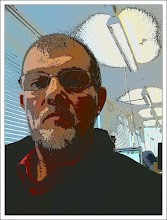
Albert Hofmann, the Swiss scientist who invented the LSD and became the first person in the world to experience a full-blown acid trip, has died. He was 102.
He was working as a chemist in Basel, when he synthesised lysergic acid diethylamide. On April 19, 1943, he took the substance before cycling home.
That day has become known among aficionados as “Bicycle Day” as it was while he was riding home that he experienced the most intense symptoms brought on by the drug.
Rick Doblin, who studied Hofmann’s work as part of his own research and knew Hofmann well, confirmed he died of a heart attack at 9am on Tuesday at his home in Basel.
As well as LSD, Hofmann later became the first person to synthesise psilocybin, the active constituent of “magic mushrooms”.
He also discovered the hallucinogenic principles of Ololiuqui (Morning Glory), lysergic acid amide and lysergic acid hydroxyethylamide.
In retirement, Hofmann served as a member of the Nobel Prize Committee. He was a Fellow of the World Academy of Sciences, and a Member of the International Society of Plant Research and of the American Society of Pharmacognosy.
In 1988 the Albert Hofmann Foundation was established “to assemble and maintain an international library and archive devoted to the study of human consciousness and related fields.”
He disapproved of the appropriation of LSD by the youth movements of the 1960s, but regretted that its potential uses had not been explored.
Albert Hofmann was married and had three children.
telegraph.co.uk
He was working as a chemist in Basel, when he synthesised lysergic acid diethylamide. On April 19, 1943, he took the substance before cycling home.
That day has become known among aficionados as “Bicycle Day” as it was while he was riding home that he experienced the most intense symptoms brought on by the drug.
Rick Doblin, who studied Hofmann’s work as part of his own research and knew Hofmann well, confirmed he died of a heart attack at 9am on Tuesday at his home in Basel.
As well as LSD, Hofmann later became the first person to synthesise psilocybin, the active constituent of “magic mushrooms”.
He also discovered the hallucinogenic principles of Ololiuqui (Morning Glory), lysergic acid amide and lysergic acid hydroxyethylamide.
In retirement, Hofmann served as a member of the Nobel Prize Committee. He was a Fellow of the World Academy of Sciences, and a Member of the International Society of Plant Research and of the American Society of Pharmacognosy.
In 1988 the Albert Hofmann Foundation was established “to assemble and maintain an international library and archive devoted to the study of human consciousness and related fields.”
He disapproved of the appropriation of LSD by the youth movements of the 1960s, but regretted that its potential uses had not been explored.
Albert Hofmann was married and had three children.
telegraph.co.uk

